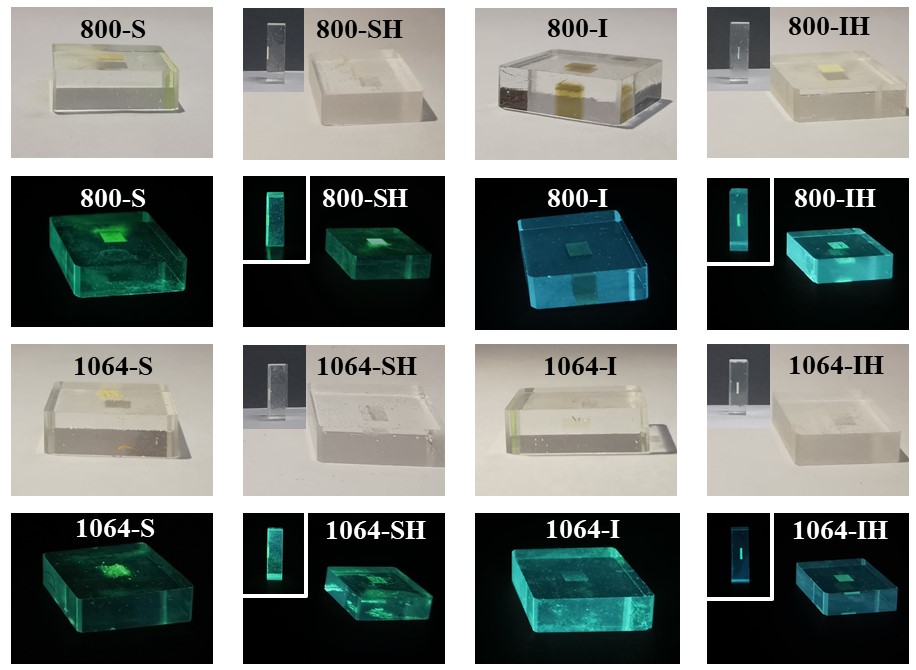Recently, the research team of Shanghai Institute of Optics and Fine Mechanics, Chinese Academy of Sciences has developed the precipitation of CsPbBr3 quantum dots in borophosphate glasses inducted by UV-NIR ultrafast lasers.
CsPbBr3 quantum dots with excellent thermal and chemical stabilities were firstly obtained in borophosphate glasses through doping aluminum and heat-treatment process, and then CsPbBr3 QDs were successfully precipitated on the surface and interior of glasses by UV-NIR ultrafast lasers irradiation, which has expanded the application range of perovskite quantum dots and shows great application prospects in the field of constructing 3D optical devices. Related research results have been published in Chemical Engineering Journal.
Currently, ultrafast lasers including picosecond and femtosecond lasers, micromachining of three-dimensional structures inside transparent media has been proven as a successful and versatile technique. Ultrafast laser-induced thermal effects can lead to efficient element migration and result in the formation of certain nanocrystals or quantum dots in the region surrounding focal points. In addition, the crystallization using ultrafast lasers has the advantage of arbitrarily constructing three-dimensional crystal patterns inside glasses, so it has great application prospects in the field of 3D optical devices. During the experiment, CsPbBr3 QDs were successfully precipitated on the surface and interior of glasses by UV-NIR ultrafast lasers with different powers irradiation.
Moreover, the behavior of lasers-induced crystallization on the surface and interior of glasses is greatly different. CsPbBr3 QDs could directly be precipitated on the surface of glasses by using low peak power ultrafast lasers irradiation and the subsequent heat-treatment would lead to the reduction of nanocrystalline size because there are defects and crystal nucleuses on the surface of glasses.
However, the irradiation of high peak power ultrafast lasers could only nucleate inside glass because of the lack of nucleation points inside glasses, and the subsequent heat-treatment was required to precipitate CsPbBr3 QDs. This new method will play an important role in constructing high-capacity optical data storage, active optical waveguides, and 3D optical devices in glasses.
Related research was supported by the National Natural Science Foundation of China (No. 51872308).

Pictures of CsPbBr3 QDs glasses by 800 nm and 1064 nm ultrafast lasers irradiation under daylight and UV light. (Image by SIOM)
Article website:
https://doi.org/10.1016/j.cej.2020.126132
Contact:
Mr. Wu Xiufeng
General Administrative Office
Shanghai Institute of Optics and Fine Mechanics, CAS
Email: xfwu@siom.ac.cn